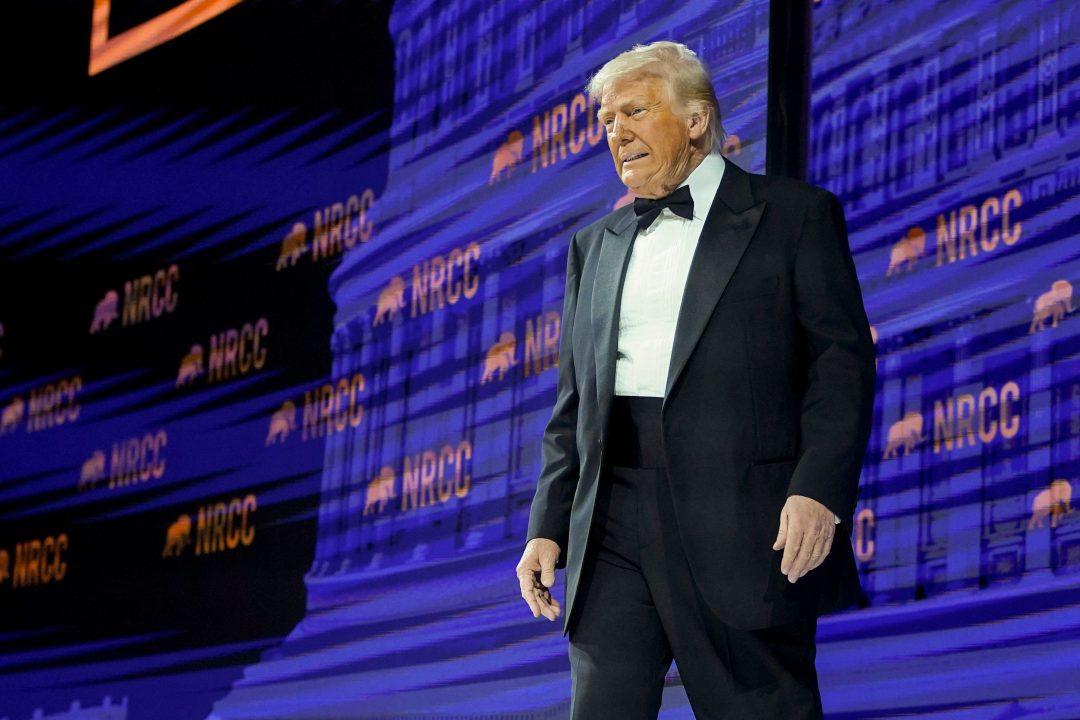Donald Trump has raised tariffs on China to 125%, hours after China boosted taxes on US imports to 84% and vowed to “fight to the end”.
The new rate levied by Beijing, which has taken effect, comes in response to Trump’s earlier move to raise the tariff on Chinese products to 104% as part of increases that hit US trading partners worldwide. Europe and Canada also hit back on Wednesday with new tariffs on imports from America.
Citing lack of respect, Trump responded by raising tariffs on China to 125%, while pausing tariffs on most countries for 90 days.
The hikes are the latest in an ongoing trade war that threatens to raise prices for consumers in America and derail China’s attempts to reinvigorate its sluggish economy. The response from the Chinese government signals its determination not to bend to Mr Trump’s pressure, despite the risks.
“If the US insists on further escalating its economic and trade restrictions, China has the firm will and abundant means to take necessary countermeasures and fight to the end,” China’s Ministry of Commerce said before announcing its latest tariff hike.
Beijing also imposed restrictions on doing business with nearly a dozen US companies and said it was launching a new challenge to the American tariffs at the World Trade Organisation.
The United States sent a record 199 billion dollars in exports to China last year, while China exported 463 billion dollars in goods and services to the United States, third behind Mexico and Canada, according to the US Commerce Department.
China was the top source of US imports as recently as 2022 but it has lost ground to America’s neighbours amid heightened tensions with the United States.
The European Chamber of Commerce in China accused the US of rolling back many of the principles that have underpinned its approach to trade and investment. It said that Trump’s tariffs would have a significant impact on European companies exporting from China to the US, forcing them to rethink their business models and supply chains.
“This will lead to a substantial increase in operational costs and inefficiencies, and ultimately higher prices for consumers,” it said.
Though the US and China may want to find a way back to the negotiating table, “this won’t be an easy path to navigate with both countries doubling down and bilateral engagement at a virtual standstill,” said former US trade official Wendy Cutler, a vice president at the Asia Society Policy Institute.
China does not appear interested in bargaining, as some other countries have started doing.
“If the US truly wants to resolve issues through dialogue and negotiation, it should adopt an attitude of equality, respect and mutual benefit,” Foreign Ministry spokesman Lin Jian said on Wednesday.
The Chinese Ministry of Culture and Tourism issued a travel advisory asking its citizens to evaluate the risks of visiting the US as tourists and to exercise caution. The advisory, which came shortly after the announcement of the tariff hike, cited the deterioration in economic and trade relations as well as the “safety situation” in America.
Trump has raised the tariff on Chinese goods four times since taking office in January. The first two hikes of 10% each were met with what analysts described as a measured response from China that left the door open for talks.
But after Trump announced an additional 34% tariff on Chinese goods last week, along with tariffs on other countries in his “Liberation Day”, China matched that with a 34% tariff on imports from the US.
Trump then added a 50% tariff on goods from China, saying negotiations were terminated, and bringing the cumulative US tariff to 104%. China responded by raising the tariff on American products by the same amount, bringing its total rate to 84%.
China’s latest measures include adding 11 American companies to an “unreliable entities” list that bars Chinese companies from selling them goods that could have military uses. Among the companies are American Photonics, and SYNEXXUS, which both work with the American military.
A Chinese position paper issued on Wednesday said that the US has not honoured the promises it made in an earlier “Phase One” trade deal concluded during Trump’s first term. As an example, it said a US law that would ban TikTok unless it is sold by its Chinese parent company violates a promise that neither would “pressure the other party to transfer technology to its own individuals”.
Trump signed an order to keep TikTok running for another 75 days last week after a potential deal to sell the app to American owners was put on ice. Representatives from ByteDance, the parent company, told the White House that the Chinese government would no longer approve a deal until there could be talks on trade.
“History and facts have proven that the United States’ increase in tariffs will not solve its own problems,” the Commerce Ministry said in a statement introducing the paper. “Instead, it will trigger sharp fluctuations in financial markets, push up US inflation pressure, weaken the US industrial base and increase the risk of a US economic recession, which will ultimately only backfire on itself.”
Follow STV News on WhatsApp
Scan the QR code on your mobile device for all the latest news from around the country





























